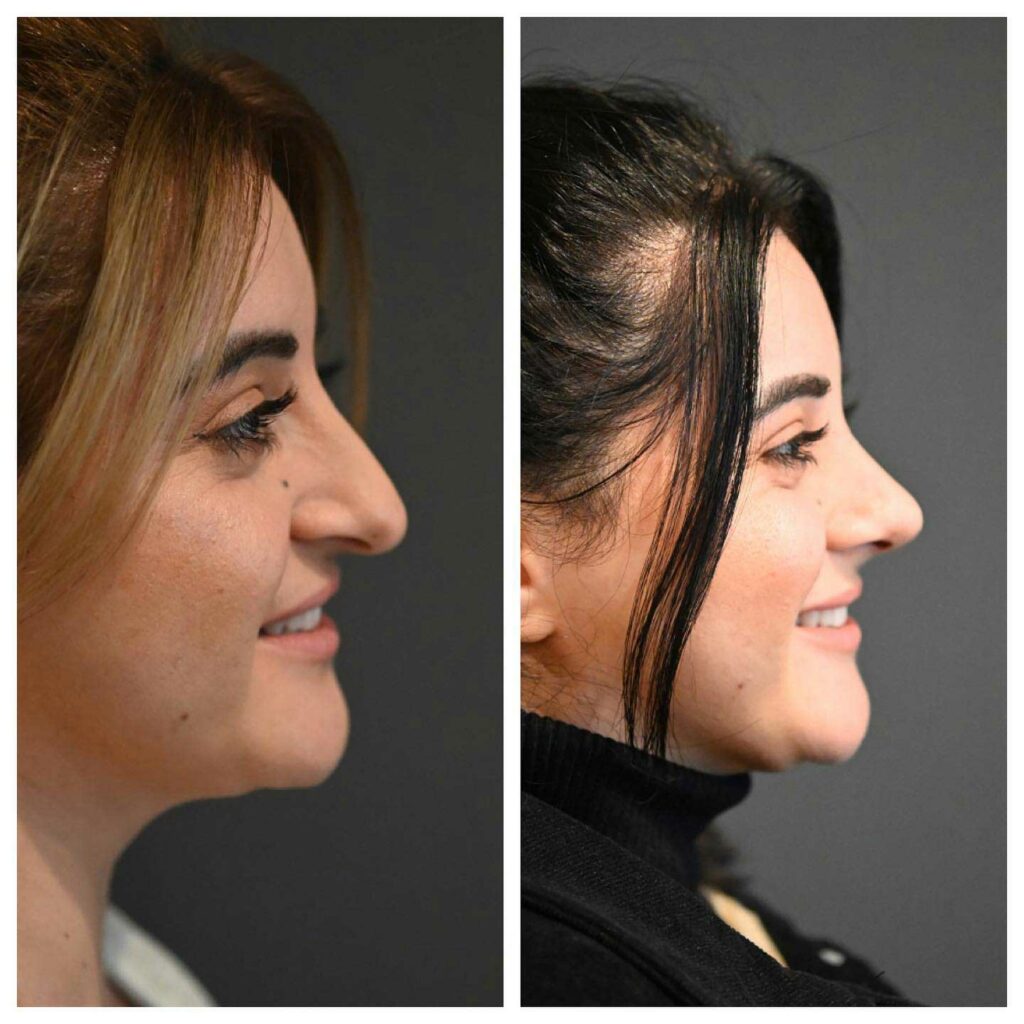How Do You Sleep After Rhinoplasty?
Model featured in photography

Undergoing rhinoplasty is a personal decision that may be made for various reasons, including altering the nasal structure or addressing functional issues like breathing difficulties. Recovery after any surgery can present challenges, and sleeping comfortably after rhinoplasty may take some adjustment.
This article explores practical tips that could help support your comfort and rest during recovery. While general advice can be helpful, it’s always important to follow your healthcare provider’s specific instructions and discuss any concerns you may have to ensure your recovery is progressing smoothly.
\
What’s the best sleeping position after rhinoplasty?
There isn’t a one-size-fits-all “best” sleeping position after rhinoplasty. The most suitable sleeping position is the one your surgeon has specifically recommended based on their assessment of your case.
Typically, keeping your head elevated can minimise swelling and support the healing process, but what’s crucial is following the advice from your surgeon.
They may, however, recommend certain sleeping positions such as:
- Back Sleeping: Sleeping on your back with your head elevated using a couple of extra pillows is generally recommended. This position helps reduce pressure on your nose and minimises the risk of inadvertently rolling onto your face during the night.
- Semi-Reclined Position: If you find it uncomfortable to sleep completely flat, consider sleeping in a semi-reclined position. You can achieve this by using an adjustable bed or propping yourself up with several pillows. This angle helps with drainage and reduces swelling.
What happens if I roll over during sleep following rhinoplasty surgery?
It’s natural to change positions during sleep, and you may inadvertently roll over onto your side or stomach. If you roll over occasionally, make an effort to return to the recommended sleeping position as soon as you realise you’ve shifted. To minimise the risk of this happening:
- Surround yourself with pillows to create a barrier that makes it more difficult to turn over.
- Use a body pillow or wedge pillow to keep you comfortably in the elevated position.
- If you do wake up in a different position, gently readjust yourself to ensure you’re sleeping with your head elevated.
How long until I can return to regular sleeping positions after rhinoplasty?
The duration for which you need to sleep with your head elevated varies from every individual’s healing process. Your cosmetic surgeon will provide specific guidance on when you can return to normal sleeping positions and activities. In many cases, by the end of the second week, you may start to transition back to sleeping in your preferred position gradually.
If you want to learn more about the recovery process, potential risks and complications, and other important details about rhinoplasty in Sydney, reach out to Artiste Plastic Surgery. Our board-certified and Specialist Plastic Surgeon, Dr Jack Zoumaras, may help address your concerns regarding the procedure and has consistently delivered natural-looking results for his patients.
Please note the information presented in this article is intended for general information purposes only and should be a substitute for professional medical advice, diagnosis, or treatment. Always consult with a qualified healthcare provider for your specific needs and concerns before pursuing any cosmetic procedure or medical advice.
Disclaimer: At Artiste Plastic Surgery, our Plastic Surgeons led by Dr Jack Zoumaras have been trained to the highest possible degree. All surgery has risks and it is always advised to get a second opinion. Risks are very real and we cannot guarantee any result. Results are illustrated as a guide only. All risks are managed and any need for revision surgery or complications (1-5%) can be managed by our specialist plastic surgeons.
Any statements on how you will feel is based on Level V Evidence:
Level V: How you will feel after plastic surgery varies between individuals, depending on psychological and physical factors. Our internal research is based on how patients in our practice feel after surgery.
The blogs are not a substitute for a medical consultation and do not form as part of the doctor to patient relationship.
SHARE THIS ARTICLE
Oct08
Upper vs Lower Eyelid Surgery: What’s the Difference
Disclaimer: At Artiste Plastic Surgery, our Plastic Surgeons led by Dr Jack Zoumaras have been trained to the highest possible degree. All surgery has risks and it is always advised ...
Oct08
Blepharoplasty for Hooded Eyes: Before & After Guide
Disclaimer: At Artiste Plastic Surgery, our Plastic Surgeons led by Dr Jack Zoumaras have been trained to the highest possible degree. All surgery has risks and it is always advised ...
ABOUT ARTISTE
Artiste Plastic Surgery is an Award Winning Specialist Plastic Surgery practice led by internationally trained Dr. Jack Zoumaras, Plastic Surgeon and Peer Reviewed Face Surgeon
Artiste offers the latest Cosmetic Surgical Procedures of the Face, Breast and Body, inspired from leading centres around the world.
STAY IN THE LOOP
Enter your email address below to receive updates on new articles and VIP access to promotions and special offers.
FOLLOW US ON INSTAGRAM
